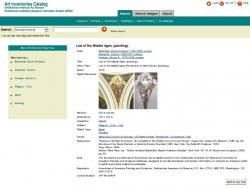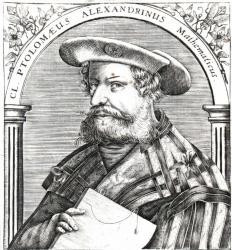Linda Muller
Smithsonian Learning Lab Coordinator
Smithsonian Institution, Heinz History Center
Primary (5 to 8 years old), Elementary (9 to 12 years old), Middle School (13 to 15 years old), Adults, Post-Secondary
Language Arts And English, Science, Social Studies, Arts, Other
Hello, I am one of the Smithsonian Learning Lab Program Coordinators based in Pittsburgh, PA. My professional interests are focused on instructional technology and computer-based learning. I am also fascinated by history as it's presented in primary and secondary resources.
Linda Muller's collections
Cuban Missile Crisis: Confrontation and Resolution
What happened during 13 days in October, 1962 when the United States confronted the Soviet Union about their activities in Cuba? Who was responsible for instigating the Cuban Missile Crisis; the United States, the Soviet Union, or Cuba? How close did we come to nuclear war? How was the conflict resolved?
This Collection is created to be used as a case study of the Cuban Missile Crisis. It contains resources that outline events that occurred during the Cuban Missile Crisis in October, 1962, including an online presentation from the John F. Kennedy Presidential Library and Museum, images and a Smithsonian Channel video.
Students should examine the resources in the Collection then develop a written response to the questions posed at the beginning of this activity.
 Linda Muller
Linda Muller
9
Libyan Rock Art
This collection contains images of rock-art of the Wadi al-Ajal, in the Fezzan region of south-west Libya. Several hundred engravings have so far been identified here. This rich concentration of rock-art spans the phase from at least 7 000 years ago until the present - a critical period of time which encompasses major transitions in human economy, culture and ideology from hunting and gathering to raising livestock, then to agriculture and more recently to industrialization. Rock-art provides fascinating evidence of how human groups were living during this period, what their relationships with their environment were and what they considered of importance and value. Because rock-art is deliberately placed at specific locations in the landscape, a powerful relationship can often exist between rock-art sites and natural landscape features.
 Linda Muller
Linda Muller
13
Atomic City in the Appalachian Mountains
The Manhattan Project didn't begin in a lab in Los Alamos Nevada - it began in the Appalachian Mountains of Tennessee. President Roosevelt wanted to put an end to WWII, so in December of 1942 he authorized the Manhattan Project. Work on procuring and clearing land for the Oak Ridge Tennessee site was already underway.
By the end of WWII, Oak Ridge was the fifth largest town in Tennessee and the Clinton Engineer Works consumed 1/7th of all the power produced in the nation.
 Linda Muller
Linda Muller
19
Branches of Government
This Collection contains resource to help students understand the three branches of government in the United States.
 Linda Muller
Linda Muller
12
Theodore Roosevelt - "Bully for you!"
A collection of resources on America's 26th President, Theodore Roosevelt.
 Linda Muller
Linda Muller
11
25 of the Most Powerful Women of the Last Century
Who are the women who have most influenced our world over the past century? What did they do to make themselves noteworthy? Your task is to research each woman, establish a timeline and place her in the proper order then write 4-6 sentences about her accomplishments and their historical impact on the world.
 Linda Muller
Linda Muller
21
Child Labor in America
What would it have been like to be a child working during the period 1830-1930? Why did children have to go to work during this period in America's history? <br />
Resources in this Collection includes paintings, photographs, text-based sources, and a video depicting children working in a variety of industries across America.
 Linda Muller
Linda Muller
23
Famous Faces: A collection of portraits by Irving Penn
Irving Penn was one of the most influential photographers of the 20th Century. Throughout a career that spanned 70 years, Penn captured images in black and white and color across various genres including advertising, fashion, still life, and portraits.
This Collection features portraits Penn took of famous people who built careers in the arts, an article written about Penn in The Smithsonian Magazine (November, 2015), and a link to the Irving Penn Archives at the Art Institute of Chicago where Penn donated the bulk of his collection in 1995.
IMPORTANT NOTE: Resources in the Irving Penn Archives collections at the Art Institute of Chicago include a series of nude photographs which may be inappropriate for minors to view.
 Linda Muller
Linda Muller
24
Counterculture of the 1960s
This collection features photographs, texts, posters, and links to additional resources that depict the counterculture movement of the 1960s. There are discussion questions embedded throughout the collection for students to consider while examining these resources.
Key terms:
Civil Rights Movement
Anti-war movement
Peace
Activism
 Linda Muller
Linda Muller
32







